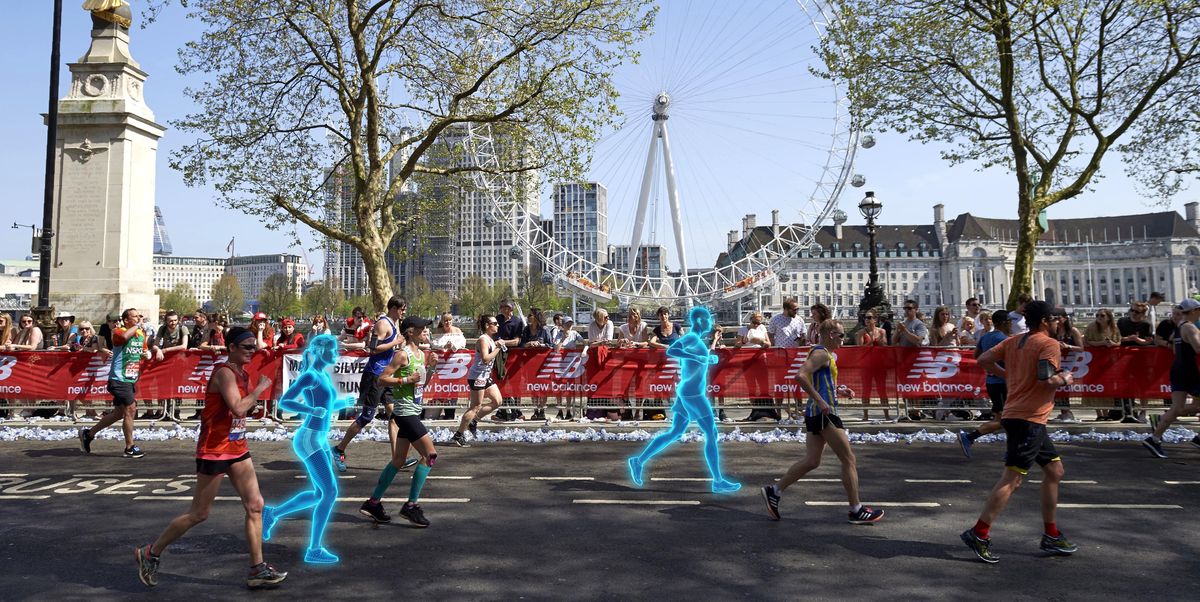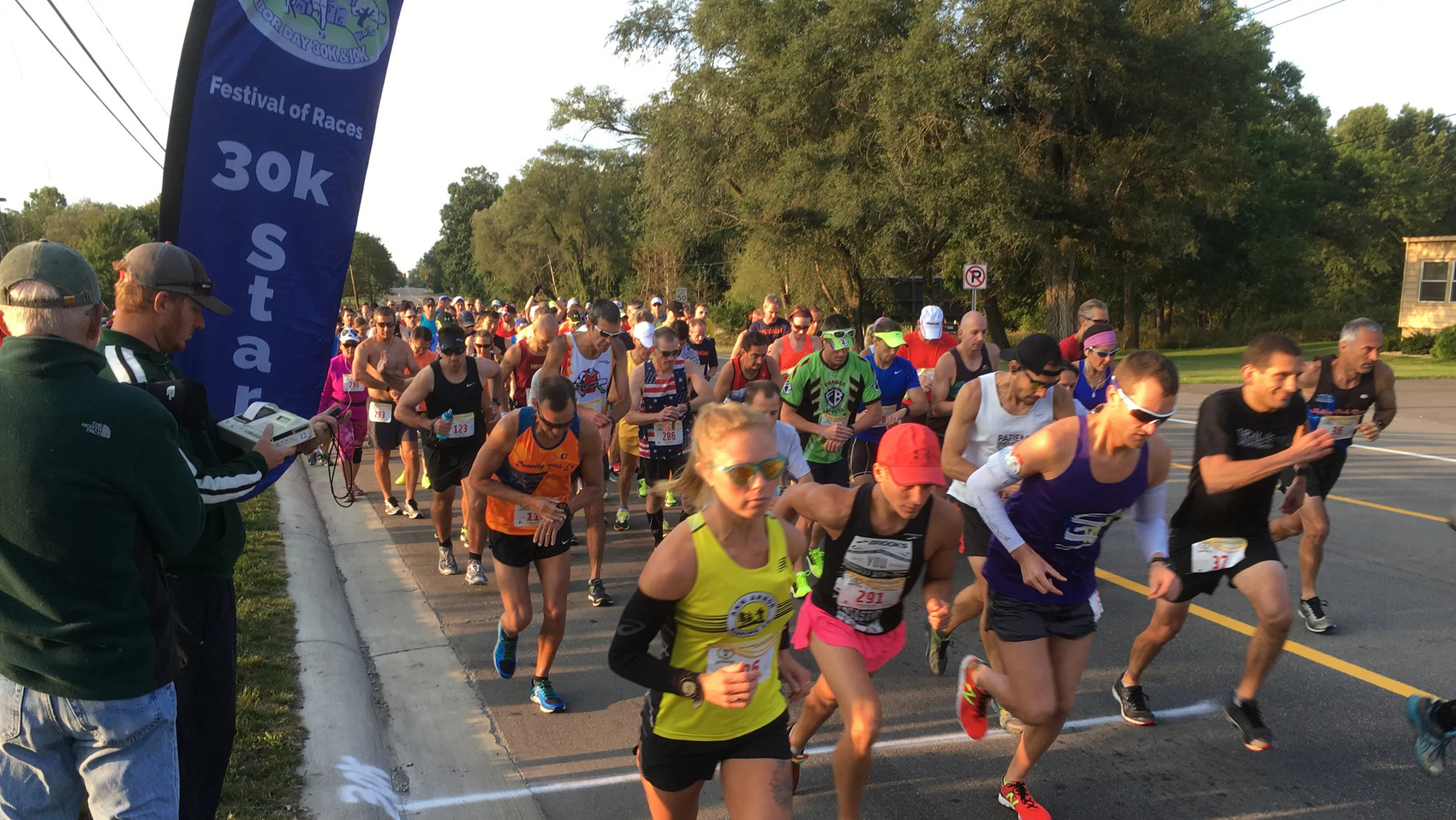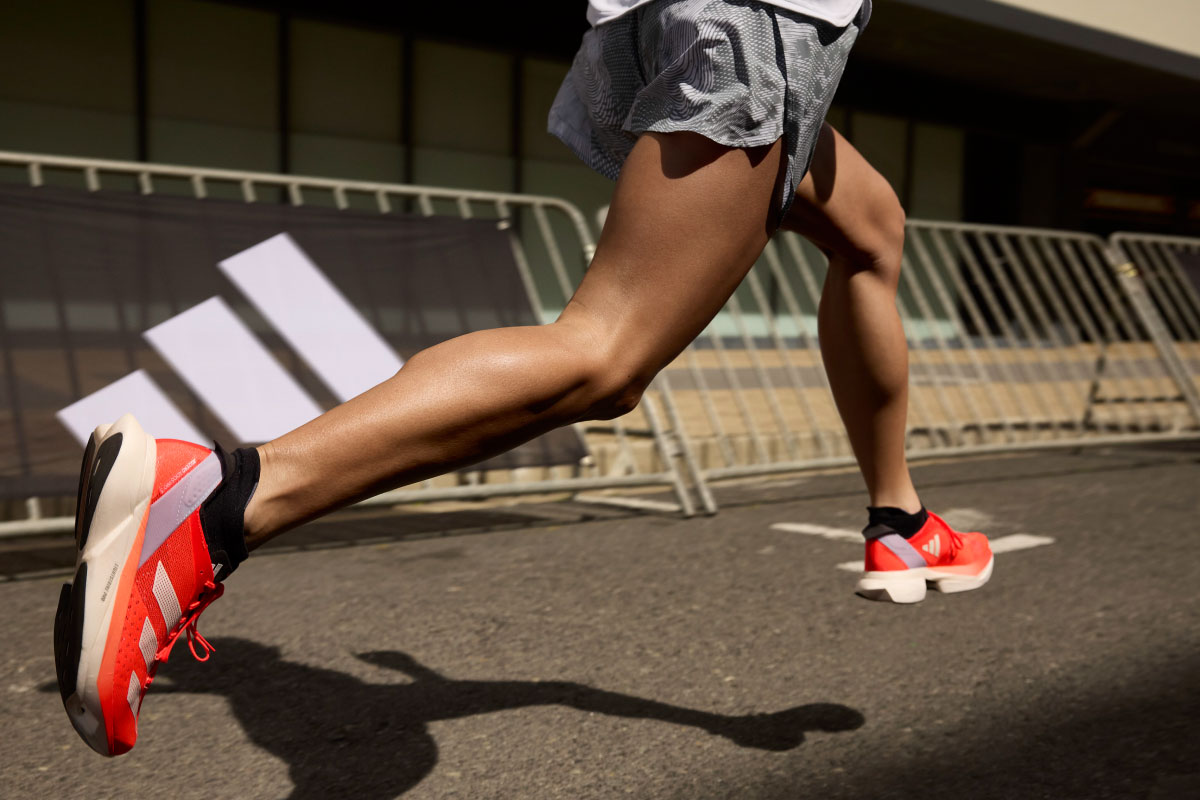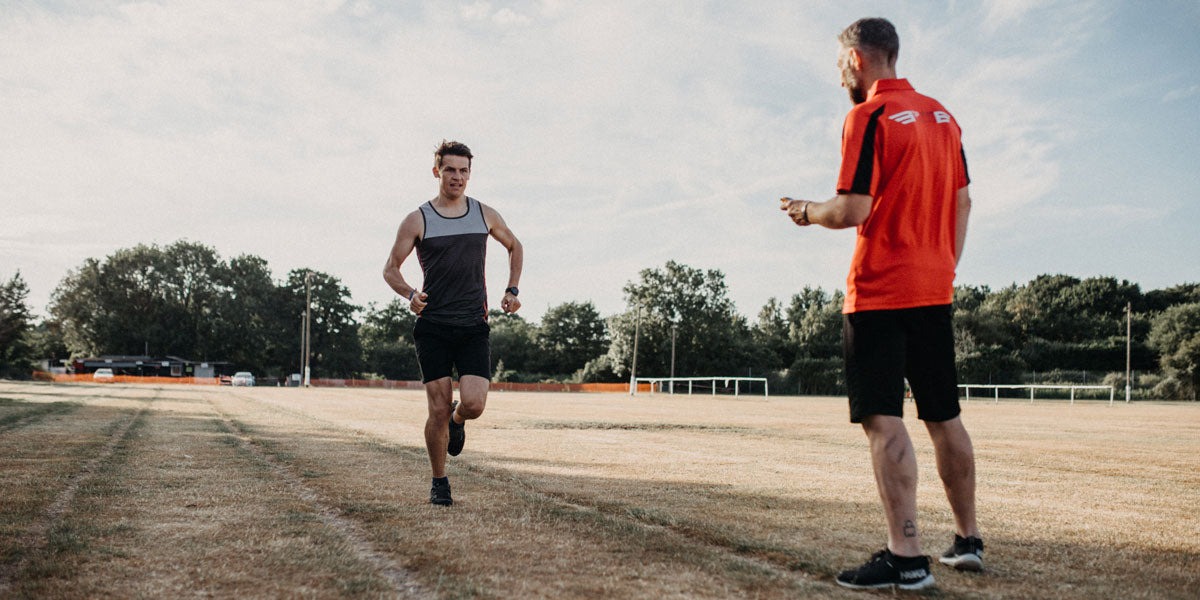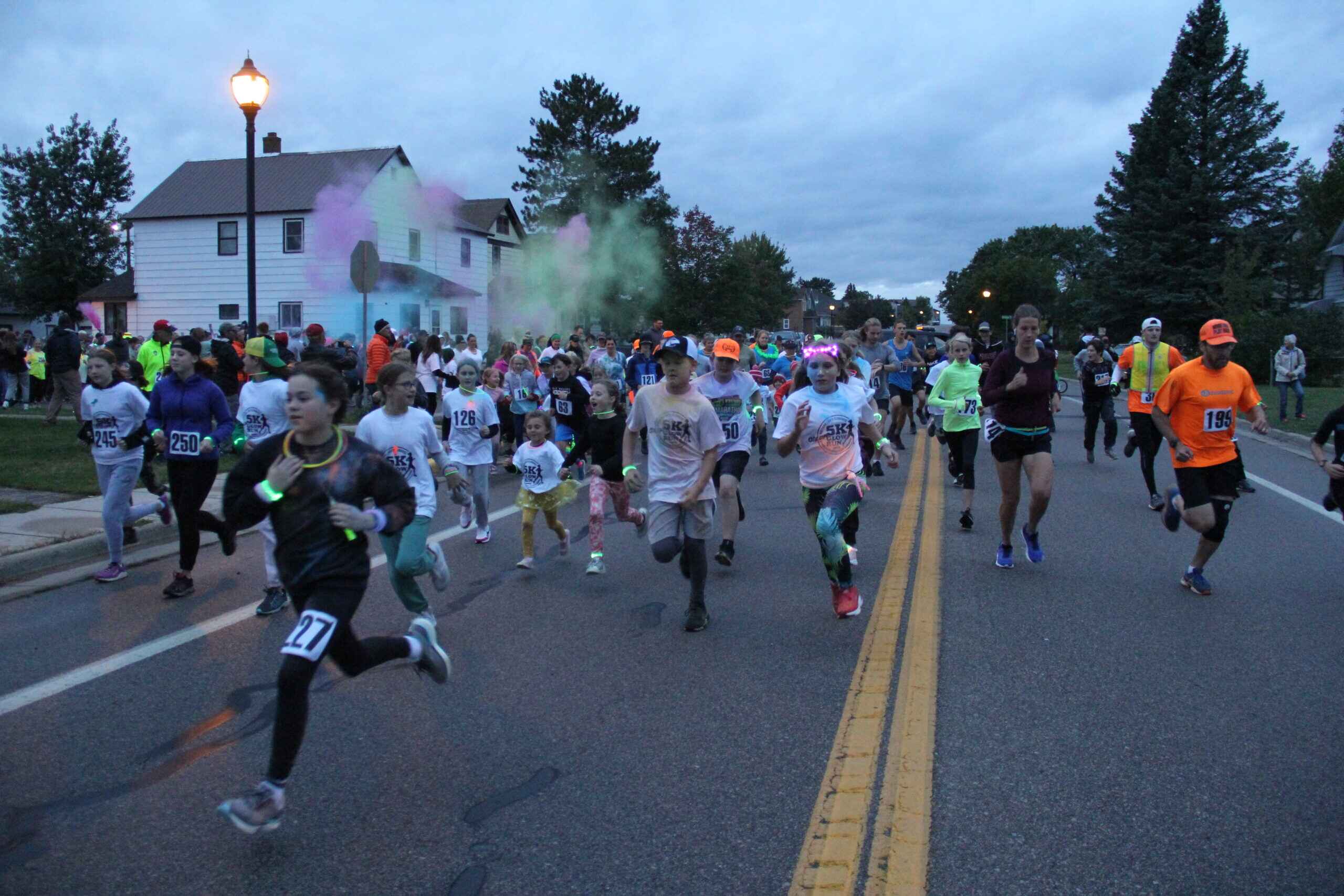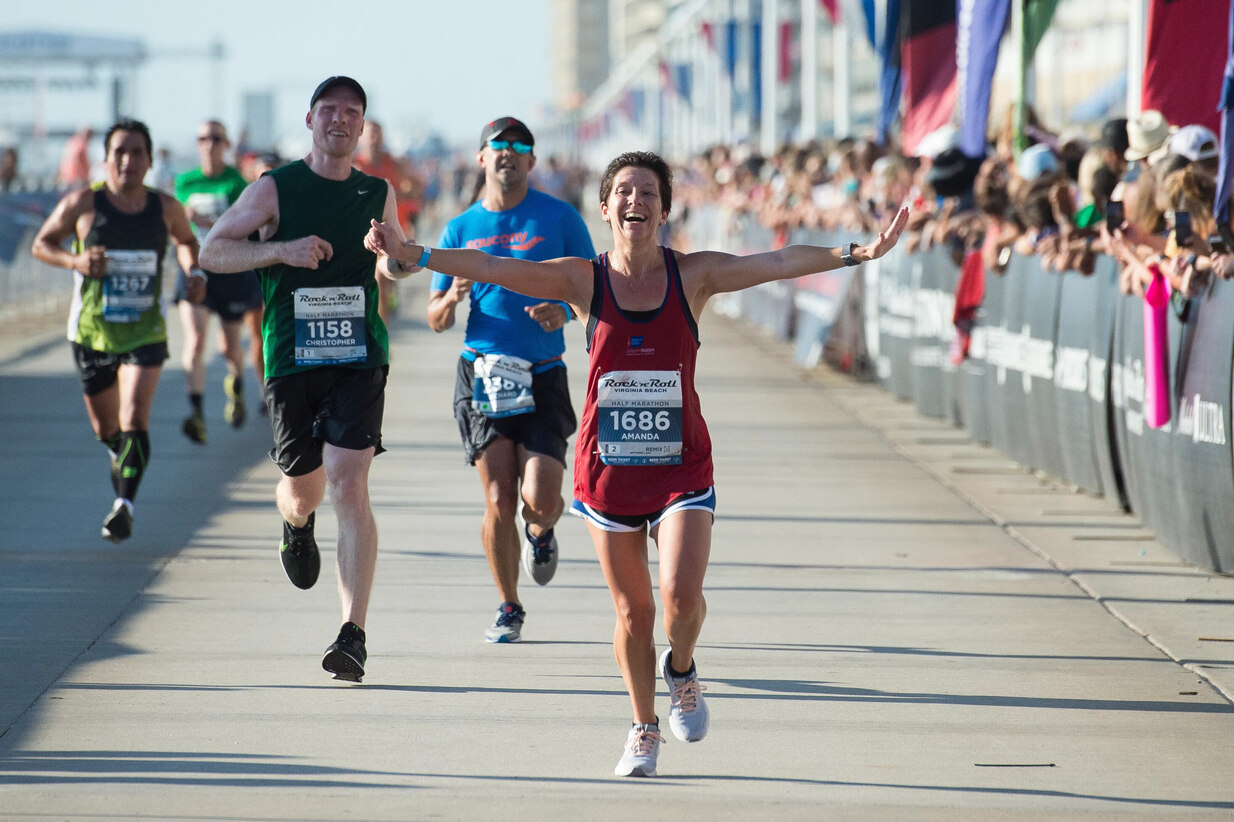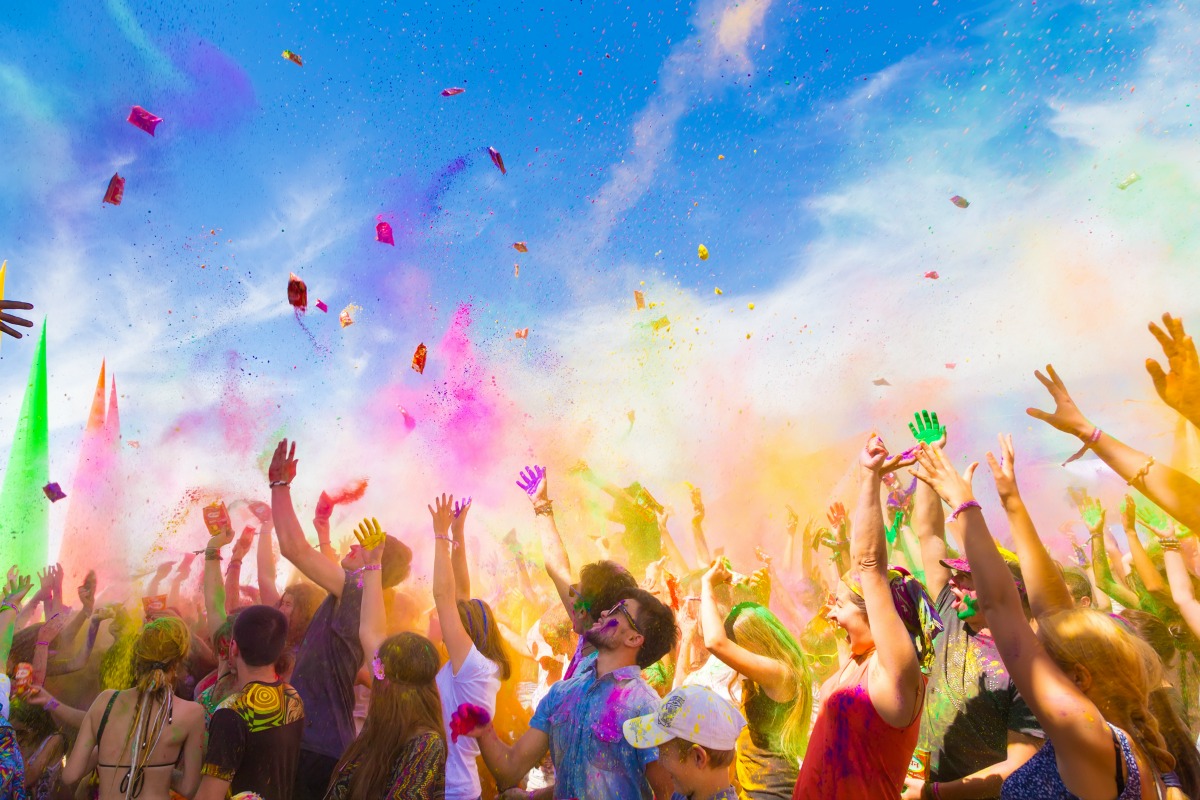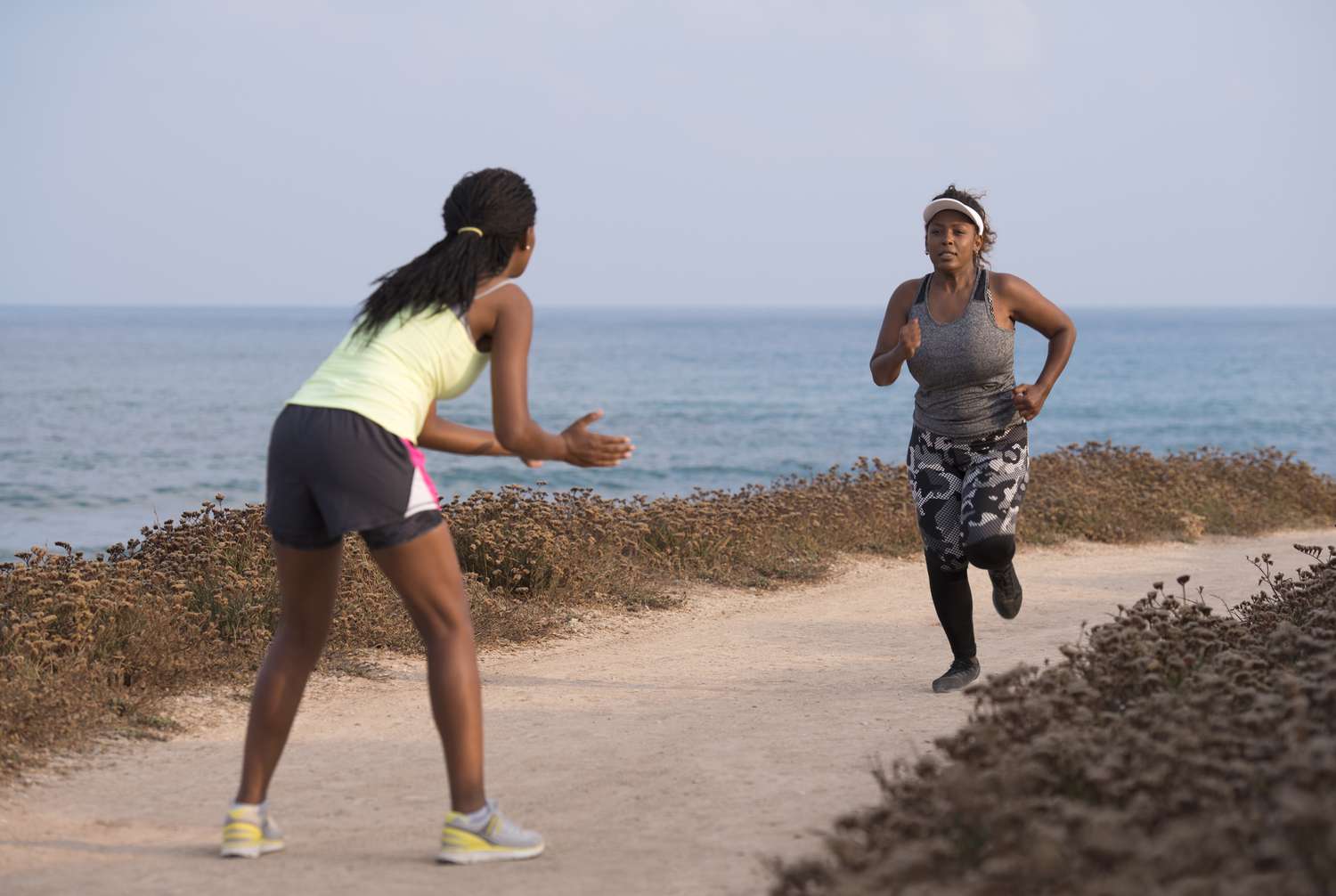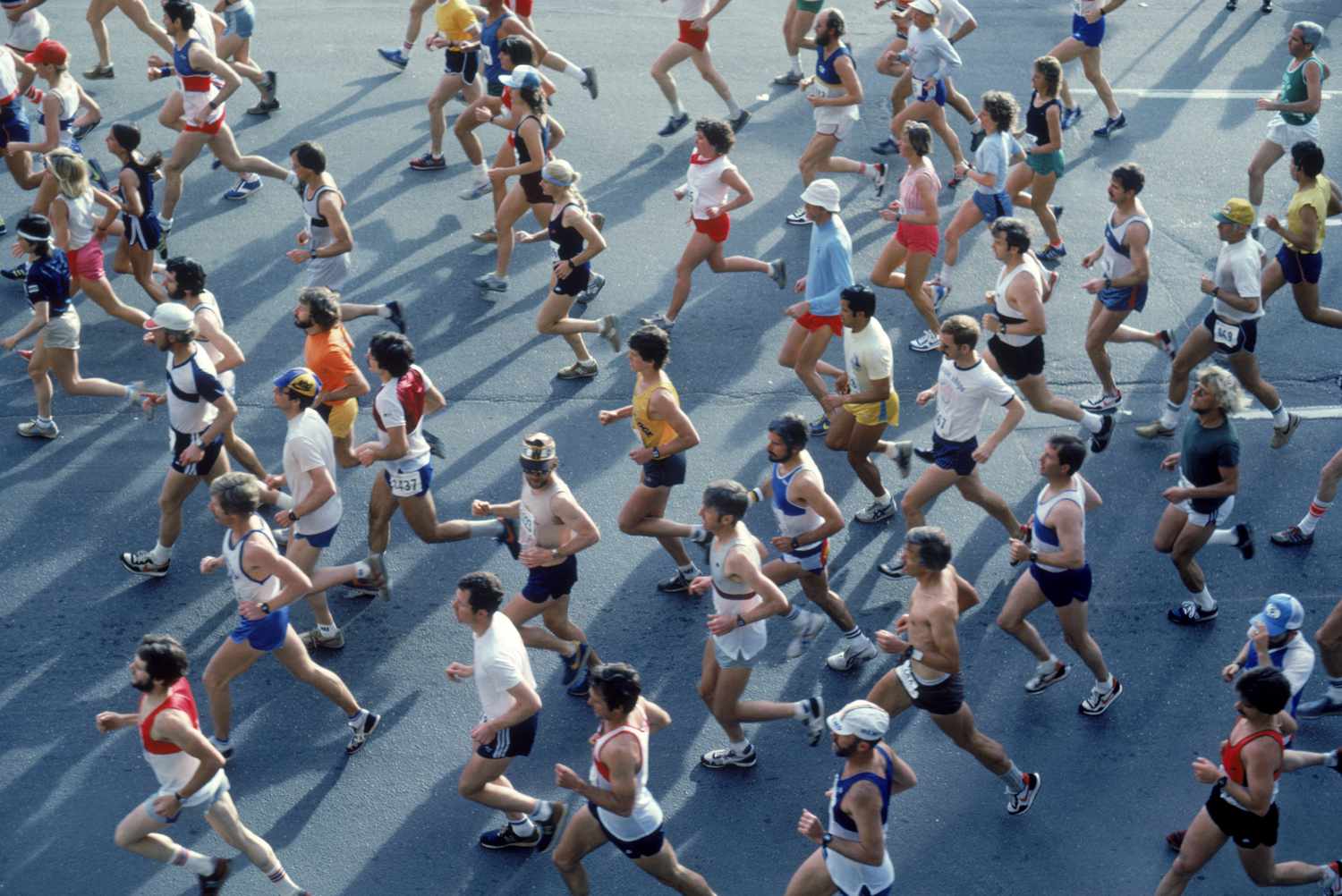

Featured
How Much Does A 5K Marathon Cost
Modified: October 24, 2023
Discover the latest information about the featured 5K marathon. Find out how much it costs to participate and get ready to lace up your running shoes!
Introduction
Welcome to the world of 5K marathons! These exciting events have gained immense popularity in recent years, attracting runners of all ages and fitness levels. Whether you’re a seasoned athlete or just beginning your running journey, participating in a 5K marathon is a great way to challenge yourself, support a cause, or simply enjoy the thrill of crossing that finish line.
But have you ever wondered about the cost of a 5K marathon? From registration fees to race swag and medical services, there are several factors that contribute to the overall expenses associated with these events. In this article, we will explore the various aspects that impact the price tag of a 5K marathon, helping you better understand the investment required to participate in these exhilarating races.
Before we delve into the specifics, let’s first define what exactly a 5K marathon is. A 5K marathon is a running event that covers a distance of 5 kilometers or approximately 3.1 miles. It is a popular race distance for beginners and those looking to improve their speed and endurance. With its shorter length compared to longer marathons, a 5K marathon offers a more accessible and achievable goal for many runners.
Now that we have a better understanding of what a 5K marathon entails, let’s explore the reasons behind their immense popularity. One of the major factors contributing to their appeal is the inclusive nature of these events. Unlike longer marathons that may require months of training and specialized gear, 5K marathons can be enjoyed by individuals of all fitness levels. They provide an opportunity for people to come together, challenge themselves, and celebrate their achievements, fostering a sense of community and support among participants.
In addition, the shorter distance of a 5K marathon allows for a more diverse participant pool. Families, friends, and colleagues can come together to form teams, making it a fun and social activity. Many 5K marathons also partner with charitable organizations, allowing participants to raise funds and create awareness for important causes. This blend of fitness, camaraderie, and philanthropy makes 5K marathons a unique and gratifying experience for all involved.
Now that we have a solid understanding of what a 5K marathon is and why they are so popular, let’s dive into the various factors that influence the cost of participating in one. From registration fees to race swag and additional services, we will explore each aspect in detail. So join us as we unravel the financial aspects of the exciting world of 5K marathons!
What is a 5K Marathon?
A 5K marathon, also known as a 5-kilometer race, is a running event that covers a distance of 5 kilometers or approximately 3.1 miles. It is one of the most popular race distances worldwide and has gained widespread participation from both casual runners and serious athletes.
The beauty of a 5K marathon lies in its accessibility and inclusivity. Unlike longer marathons that can be daunting for beginners or those with busy schedules, a 5K offers a manageable and achievable goal for individuals of all fitness levels. It is an excellent option for those who want to dip their toes into running or set a personal best time.
Typically, participants in a 5K marathon follow a designated route, often through city streets or parks. The race may be organized as a standalone event or as part of a larger race series or charity fundraiser. Participants can choose to run, walk, or jog the distance, depending on their preference and fitness level.
With the rise in popularity of 5K marathons, many organizers have started to incorporate unique themes or twists to enhance the participant experience. Some races may feature color runs, where participants are showered with vibrant and non-toxic colored powders along the route. Others may incorporate costume contests or special challenges to add an element of fun and excitement.
One aspect that makes 5K marathons particularly appealing is the sense of community and camaraderie among participants. Many races attract large crowds, bringing together individuals from different backgrounds with a shared goal of crossing the finish line. This shared experience fosters a supportive and motivating environment, making it easier for participants to stay motivated and push past their limits.
Another advantage of a 5K marathon is the relatively short training period required. While longer marathons often demand months of preparation and rigorous training schedules, a 5K provides more flexibility. Beginners can gradually build up their endurance and fitness level in a matter of weeks, making it an excellent choice for those looking to start or restart their fitness journey.
Whether you’re a seasoned runner looking to improve your speed or a beginner wanting to embrace a healthier lifestyle, a 5K marathon offers a fantastic opportunity to achieve your goals. With its manageable distance, vibrant atmosphere, and inclusive nature, a 5K marathon is the perfect blend of fitness, fun, and community spirit. So lace up your running shoes and embark on an unforgettable journey through the world of 5K marathons!
The Popularity of 5K Marathons
5K marathons have experienced a surge in popularity in recent years, capturing the attention and participation of individuals from all walks of life. The widespread appeal of these races can be attributed to several factors that make them attractive to both seasoned runners and beginners alike.
One of the main reasons behind the popularity of 5K marathons is their accessibility. Unlike longer marathons that require extensive training and preparation, a 5K marathon can be completed by individuals of varying fitness levels. This inclusivity opens the doors for individuals who may have been hesitant to participate in longer races but want to challenge themselves and experience the thrill of crossing the finish line.
Additionally, the shorter distance of 5K marathons makes them more time-friendly for busy individuals. Training for and completing a longer marathon can often be a time-consuming commitment, but a 5K race allows participants to fit their training into their daily routines more easily. This flexibility appeals to those who have limited time or who are juggling work, family, and other responsibilities.
Furthermore, 5K marathons have become popular social events and opportunities for community engagement. Many races are organized to support charitable causes, providing participants with the chance to run for a purpose and contribute to a meaningful cause. The sense of community and the shared goal of making a difference can make the entire experience even more rewarding.
The vibrant atmosphere and unique themes that many 5K marathons incorporate also contribute to their popularity. Races with color runs, glow-in-the-dark themes, or fun obstacles add an element of fun and excitement to the event. These elements not only attract seasoned runners but also appeal to individuals who may not have considered participating in a traditional marathon before.
Another reason for the popularity of 5K marathons is the opportunity for personal growth and achievement. For many participants, completing a 5K race represents a significant milestone in their fitness journey. Crossing the finish line, regardless of the time it takes, gives a sense of accomplishment and boosts self-confidence. This achievement can motivate individuals to set new goals and continue pursuing an active and healthy lifestyle.
Overall, the popularity of 5K marathons can be attributed to their accessibility, inclusivity, social aspect, and the chance for personal growth. Whether it’s for fitness, fun, or a charitable cause, 5K marathons provide a platform for individuals to challenge themselves, connect with their community, and celebrate their achievements. With their rising popularity, it’s no surprise that more and more people are lacing up their running shoes and joining the excitement of 5K races.
Factors Affecting the Cost of a 5K Marathon
The cost of participating in a 5K marathon can vary depending on several factors. Understanding these factors can help potential participants better plan and budget for their race experience. Let’s explore the key elements that influence the overall cost of a 5K marathon.
1. Registration Fees: The most significant cost associated with a 5K marathon is the registration fee. This fee typically covers the administrative costs of organizing the event, including permits, insurance, and race management. The registration fee can vary widely depending on factors such as the location, popularity, and prestige of the race. In some cases, early bird discounts or team registration options may be available, offering participants the opportunity to save money.
2. Race Swag and Goodie Bags: Many 5K marathons provide participants with race swag and goodie bags as part of their registration fee. These items can include a race t-shirt, a finisher medal, a race bib, and other promotional items from sponsors. The quality and quantity of the swag can vary between races, impacting the overall cost. Some participants may also have the option to purchase additional merchandise or upgrade their swag package for an extra fee.
3. Timing and Results: Timing services play a crucial role in 5K marathons, allowing participants to track their progress and receive accurate results. While some races include timing services as part of the registration fee, others may charge an additional fee for this service. Participants who are aiming for a personal best time or who want to compare their results with other runners may find this feature worth the extra cost.
4. Medical Services and Safety Measures: Ensuring the safety and well-being of participants is a top priority for race organizers. 5K marathons may incur expenses for medical support, such as on-site medical personnel and first aid stations throughout the course. These services are crucial in case of emergencies or minor injuries. The cost of medical services can affect the overall race budget, as organizers need to provide a safe environment for participants.
5. Volunteer Support: Volunteers play a vital role in the smooth operation of 5K marathons. They may assist with race packet pickup, course marshalling, water stations, and other essential tasks. Organizers may allocate funds to recruit and coordinate volunteers, ensuring that participants have a positive race experience. The extent of volunteer support required can impact the overall budget and, consequently, the registration fees.
While the factors mentioned above are the primary contributors to the cost of a 5K marathon, it’s essential to note that additional expenses may be incurred depending on the specific race. For example, races that provide post-race refreshments, entertainment, or professional photography may have higher operating costs and charge slightly higher registration fees.
By considering these factors, participants can make informed decisions when choosing which 5K marathon to participate in and budget accordingly. It’s important to remember that the overall cost of a 5K marathon often reflects the quality of the race experience, including the level of organization, participant benefits, and support services provided. However, regardless of the cost, the sense of accomplishment, community engagement, and personal growth that arise from completing a 5K marathon are invaluable.
Registration Fees
When it comes to participating in a 5K marathon, one of the most significant costs to consider is the registration fee. The registration fee for a 5K marathon can vary widely depending on various factors, including the location, popularity, and prestige of the race. Understanding the components that contribute to these fees can help prospective participants plan and budget for their race experience.
Why do 5K marathons charge registration fees? These fees cover the administrative costs associated with organizing the event. Race organizers must obtain permits, secure insurance, coordinate logistics, and provide essential services to ensure a safe and well-run event. The registration fees also contribute to the overall budget for race swag, awards, timing services, and other participant benefits.
The actual registration fee for a 5K marathon can vary greatly depending on several factors:
- Location: The cost of organizing an event can be influenced by the location. Races held in major cities or popular tourist destinations may have higher logistical expenses, such as obtaining permits and coordinating road closures. These costs may translate into a slightly higher registration fee.
- Popularity: The popularity and demand for a specific 5K marathon can also influence the registration fee. Races known for their scenic routes, unique themes, or exceptional participant experience may have higher fees due to the high demand for limited race spots.
- Prestige: Races with established reputations and a long-standing history often command higher registration fees. These events may offer participants a higher level of organization, better race swag, or more advanced timing services, which contribute to the overall cost.
- Early Bird Discounts: Many 5K marathons offer early bird registration discounts to encourage participants to sign up early. These discounts can provide a significant savings opportunity for those who plan their race participation in advance.
- Team Registration: Some races offer team registration options, which can reduce the individual registration fee. This encourages groups of friends, colleagues, or families to participate together, fostering a sense of camaraderie and promoting a team spirit.
It’s important for participants to consider the value they will receive for the registration fee. Registration fees often cover more than just the race itself. Participants may receive a race t-shirt, a finisher medal, a race bib, and other promotional items as part of their registration package. These “race swag” items can add to the overall experience and provide a lasting memento of the event.
Furthermore, registration fees also contribute to the availability of essential services during the race. This includes timing services, which allow participants to track their progress and receive accurate results. In some cases, additional services such as professional race photos, access to post-race refreshments, or entertainment may also be included in the registration fee.
By understanding the factors that influence registration fees, participants can make informed decisions when choosing which 5K marathon to join. While the cost may vary, it’s important to remember that the registration fee directly supports the organization and execution of the event, ensuring a positive and memorable race experience for all participants.
Race Swag and Goodie Bags
One of the exciting aspects of participating in a 5K marathon is the race swag and goodie bags that participants receive. These items not only add to the overall race experience but also serve as tangible mementos of the event. The race swag and goodie bags are often included as part of the registration fee, and their contents can vary depending on the race and the generosity of sponsors.
Race swag refers to the promotional items and goodies that participants receive as part of their race registration package. These items can include a race t-shirt, a finisher medal, a race bib, and other branded merchandise. The race swag not only serves as a form of recognition for participants but also adds to the excitement and sense of camaraderie on race day.
The race t-shirt is one of the most common and cherished items in a race swag bag. It serves as both a fashion statement and a commemorative item, displaying the race logo, year, and sometimes the names of sponsors. The race t-shirt is often worn with pride by participants during the race and serves as a lasting reminder of their accomplishment.
Finisher medals are another highly prized item in the race swag bag. These medals are awarded to participants who successfully complete the 5K marathon. Finisher medals come in various designs and sizes, and they symbolize the achievement and hard work put into training for and completing the race. Many participants proudly display their collection of finisher medals as a testament to their running accomplishments.
In addition to t-shirts and medals, race swag may also include practical items such as water bottles, drawstring bags, or sweatbands. These items often feature the race logo and provide participants with useful and memorable souvenirs. They can be used during training sessions, other races, or in everyday life, serving as reminders of the 5K marathon experience.
Goodie bags, sometimes referred to as race packets, often contain additional items and goodies for participants to enjoy. These items can include samples of energy gels, protein bars, hydration supplements, or other snacks. Some goodie bags may also include discount coupons or vouchers for local businesses or fitness-related products. The contents of the goodie bags can vary depending on the race’s sponsorship agreements and the budget allocated for these items.
Organizers go to great lengths to secure sponsors and partners who can contribute to the race swag and goodie bags. Sponsors may provide financial support or donate their products or services in exchange for brand exposure at the event. The generosity of sponsors directly impacts the quality and quantity of race swag and goodie bag items, adding value to the overall race experience for participants.
Ultimately, the race swag and goodie bags not only provide participants with tangible items but also contribute to the overall atmosphere of the 5K marathon. These items serve as lasting reminders of the event and create a sense of unity among participants. Whether it’s proudly wearing the race t-shirt or displaying the finisher medal, race swag and goodie bags play a significant role in making the race experience memorable and rewarding for all involved.
Timing and Results
Timing and results are integral components of any 5K marathon. They play a crucial role in providing accurate and reliable information to participants, allowing them to track their progress and compare their performance with others. The timing services and result reporting are often offered as part of the overall race experience, although some races may charge an additional fee to cover the costs associated with these services.
Timing services are essential in a 5K marathon as they provide participants with accurate data on their race performance. This information is typically recorded using electronic timing devices, such as RFID chips or timing mats placed along the race course. Participants wear these chips on their race bibs or shoelaces, and as they pass over the mats, their race time is recorded automatically. This ensures precise data that can be used to calculate official finishing times.
Using the timing data, participants can track their pace, evaluate their performance, and strive for personal bests. It allows runners to measure their progress over time and set specific goals for future races. Timing services also enable runners to compare their results with other participants, motivating them to push themselves and aim for better performance.
Alongside the timing services, the race organizers provide access to the results. These results are usually made available promptly after the race, either through a dedicated website, email, or a mobile app. Participants can search for their individual race numbers and find their official times, rankings within their age groups or categories, and other relevant statistics.
Some races may also offer live tracking options, allowing spectators and participants’ friends and family to monitor participants’ progress in real-time. This feature adds excitement and support during the race, as well as provides an opportunity for remote spectators to cheer on and celebrate their loved ones’ achievements.
In addition to individual results, race organizers often publish overall race results, highlighting the top finishers, and recognizing exceptional performances. This can create friendly competition among participants and inspire them to strive for excellence in future races.
It is important to note that timing services come with associated costs for the race organizers. The fees cover the timing devices, equipment rentals, data management, and technical staff required to set up and operate the timing infrastructure. In some cases, races may charge an additional fee for participants who wish to receive a detailed timing analysis or a personalized certificate of completion.
Timing and results are critical elements of a 5K marathon. They provide participants with accurate data and a sense of achievement, and they foster a competitive spirit among runners. The availability of these services enhances the overall race experience, allowing participants to measure and celebrate their performance while providing valuable statistics to aid in future training and goal-setting.
Medical Services and Safety Measures
The safety and well-being of participants are of utmost importance in a 5K marathon. To ensure a secure environment throughout the race, organizers allocate resources to provide medical services and implement various safety measures. These measures are in place to address any potential emergencies or injuries that may occur during the event.
Medical services are an essential aspect of a 5K marathon. Race organizers collaborate with medical professionals, such as doctors, nurses, and paramedics, to provide on-site medical support. They set up medical stations strategically along the race course to offer immediate aid and assistance to participants in need.
The medical stations are equipped with basic medical supplies, including bandages, antiseptics, ice packs, and pain relievers. Trained medical personnel are present to assess and treat minor ailments, such as blisters or sprains, as well as to respond to medical emergencies. Their presence helps ensure the safety and well-being of all participants throughout the race.
In addition to medical services, race organizers implement various safety measures to minimize the risk of accidents and provide a secure race environment. These measures can include:
- Course Marshals: Course marshals are volunteers or race personnel stationed along the race route to guide and direct participants. They ensure that runners stay on the designated course and provide assistance in case of confusion or emergency.
- Water Stations: Water stations are set up at regular intervals along the race course to provide hydration to participants. These stations are manned by volunteers who distribute water or sports drinks to keep runners properly hydrated during the race.
- Route Markers: Clear route markers, such as signs, arrows, or cones, are placed along the course to guide participants in the right direction. These markers help prevent participants from getting lost or taking wrong turns.
- Traffic Control: In urban areas where roads are not entirely closed for the race, traffic control measures are implemented to ensure the safety of both participants and motorists. Traffic police officers or volunteers manage intersections, redirect traffic, and ensure a smooth flow of vehicles.
- Pre-Race Safety Briefings: Organizers may conduct pre-race safety briefings to educate participants about the race route, potential hazards, and safety protocols. This ensures that all participants are aware of the safety measures in place and understand their responsibilities as runners.
Behind the scenes, race organizers collaborate with local authorities, emergency services, and the appropriate regulatory bodies to obtain permits and ensure compliance with safety guidelines. This collaboration helps mitigate potential risks and ensures that the race is aligned with established safety standards.
It’s important to note that the allocation of resources for medical services and safety measures incurs costs for race organizers. These costs include medical personnel salaries, medical supplies, equipment rentals, safety signage, and coordination efforts. The registration fees charged to participants help cover these expenses, reflecting the commitment of organizers to provide a safe and enjoyable race experience for all.
By prioritizing medical services and implementing safety measures, race organizers strive to create a secure environment for participants in a 5K marathon. The presence of trained medical personnel and well-implemented safety protocols provide peace of mind to runners and their loved ones, allowing everyone to focus on enjoying the race and achieving their personal goals.
Volunteer Support
Volunteers play a vital role in the success of a 5K marathon. Their dedication, enthusiasm, and support contribute immensely to creating a memorable and well-organized race experience for participants. From race packet pickup to course marshalling and water stations, volunteers offer their time and energy to ensure the smooth operation of the event.
One of the primary responsibilities of volunteers is assisting with race packet pickup. Before the race, participants collect their race bibs, timing chips, and any additional swag items. Volunteers help distribute these materials, check-in participants, and answer any questions or concerns they may have. This process sets a positive tone for the event and allows participants to feel welcome and prepared for their race.
On race day, volunteers are stationed throughout the course to provide guidance, encouragement, and support to the participants. Course marshals ensure that runners stay on the designated route and assist in case of any confusion or emergencies. Their presence helps maintain the integrity and safety of the race course, minimizing the risk of participants getting lost or deviating from the planned route.
Water stations also heavily rely on volunteer support. These stations are crucial for participants to stay hydrated during the race. Volunteers fill cups with water or sports drinks, distribute them to runners, and collect used cups to keep the course clean and safe. Their enthusiastic cheers and words of encouragement provide an extra boost of motivation to participants as they pass through the water stations.
In addition to these essential roles, volunteers may also be involved in various other tasks, such as distributing medals, managing gear check areas, or providing information and assistance to spectators. Their presence enhances the overall race experience, elevating the energy and sense of community among participants, spectators, and volunteers.
The recruitment and coordination of volunteers require substantial effort from race organizers. They actively seek individuals or groups who are willing to contribute their time and energy to support the event. Volunteers receive training and guidance to ensure they understand their roles and responsibilities during the race. Clear communication channels are established to address any concerns or issues that may arise.
It’s important to recognize that volunteer support is voluntary and often goes beyond just a sense of community involvement. It is the commitment and dedication of these individuals that make a 5K marathon possible. Race organizers may show their appreciation by providing volunteers with perks such as t-shirts, meals, or tokens of gratitude. Recognizing their contributions not only motivates volunteers but also encourages others to participate and support future events.
By volunteering in a 5K marathon, individuals become an integral part of the race experience. Their selfless contribution creates an atmosphere of support, encouragement, and camaraderie, making the event more enjoyable for participants and fostering a sense of community. The dedication and enthusiasm of volunteers truly make a difference in the success of a 5K marathon, leaving a lasting impact on participants and organizers alike.
Additional Expenses to Consider
While registration fees cover the primary costs associated with participating in a 5K marathon, there are additional expenses that participants might need to consider when planning for the event. These expenses can vary depending on individual preferences and circumstances, and being aware of them helps ensure a well-rounded budgeting approach.
1. Training Costs: Proper training plays a crucial role in preparing for a 5K marathon. Participants may incur expenses for training gear, such as running shoes, comfortable clothing, and accessories like a sports watch or fitness tracker. Additionally, some individuals might opt for fitness memberships or coaching services to enhance their training regimen.
2. Travel and Accommodation: If the 5K marathon is taking place in a different city or requires participants to travel, travel expenses such as transportation, lodging, and meals need to be taken into account. Depending on the distance and location, these costs can vary significantly and may require early planning and budgeting.
3. Race-Day Nutrition: Proper nutrition and hydration are essential for optimal performance during the 5K marathon. Participants may want to consider the cost of energy gels, hydration packs, or sports drinks that they plan to consume before, during, or after the race. Investing in a balanced diet and nutritional supplements to support training and recovery may also be necessary.
4. Race-Day Parking: In some cases, participants may need to pay for parking on race day, especially if the event is held in a city or at a location with limited free parking options. It’s essential to be aware of any parking fees and plan accordingly to avoid any last-minute surprises.
5. Photography and Memorabilia: Many 5K marathons offer professional photography services, capturing participants’ race moments and milestones. Participants who desire high-quality race photos as keepsakes may need to budget for purchasing these photos or packages. Additionally, some races may offer commemorative memorabilia, such as race posters or personalized certificates, which could be an additional expense.
6. Post-Race Activities: After completing the 5K marathon, participants may choose to celebrate their accomplishment with friends or family by dining out or engaging in other leisure activities. These post-race activities can add to the overall experience but should be considered when planning the overall budget for the event.
By considering these additional expenses, participants can effectively budget and prepare for their 5K marathon experience. It’s important to note that not all of these expenses will apply to every participant, and personal preferences will vary. Planning ahead and being aware of these potential costs will help ensure a smooth and enjoyable race experience without any financial surprises along the way.
Conclusion
Participating in a 5K marathon is an exciting and fulfilling experience that offers numerous benefits, from promoting physical fitness and personal growth to fostering a sense of community and supporting charitable causes. However, it’s important to consider the financial aspects when planning to participate in a 5K marathon.
Understanding the factors that affect the cost of a 5K marathon, such as registration fees, race swag, timing services, medical support, and volunteer assistance, enables participants to budget appropriately and make informed decisions about their race experience. While registration fees cover the primary expenses, there are additional costs to consider, including training, travel, race-day nutrition, parking, photography, and post-race activities.
Despite the financial considerations, the sense of accomplishment, the joy of crossing the finish line, and the camaraderie among participants make the investment in a 5K marathon worthwhile. The race swag and goodie bags serve as valuable mementos, while timing and results provide participants with accurate data to track their progress and set future goals.
Furthermore, medical services and safety measures ensure the well-being of participants, while volunteer support creates a positive and supportive race environment. The dedication and enthusiasm of volunteers add to the overall race experience, enhancing the sense of community and unity among participants.
Ultimately, participating in a 5K marathon is about more than just the financial aspect. It’s about embracing the challenge, experiencing personal growth, and celebrating the journey towards a healthier and more active lifestyle. The memories and achievements gained from completing a 5K marathon are priceless and create lasting impressions.
So, whether you’re a seasoned runner or a beginner taking your first steps in the world of running, don’t let the financial considerations deter you from the exhilarating experience of a 5K marathon. Plan and budget accordingly, harness your determination, and embrace the adventure that awaits you at the starting line of a 5K marathon!
